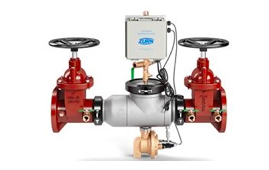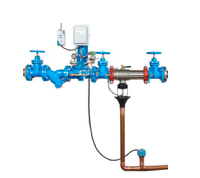Internet shorthand is everywhere now, it’s not just Gen Z and kids anymore. As digital continues to reshape life and culture across the globe, the way we communicate is also evolving. ZOMG!
This transformation isn’t confined to people, either. Machines across all sectors are increasingly equipped to communicate with one another in what is familiarly known as the Internet of Things, or IoT.
This network of interconnected technologies allows machines to ‘speak’ with each other, sharing data with one another and with users alike. As of 2020, over 20 billion devices and products were connected via the Internet, and that number is only going to exponentially grow as we move forward.
As mentioned, there isn’t an industry or sector that is not affected by this digital revolution. That includes waterworks, more specifically, backflow preventers.
Backflow Prevention Goes Online
Both Watts and Wilkins backflow preventers now have product offerings that tap into the IoT.
These smart backflow devices allow owners, facility managers and testers to enjoy constant monitoring and receive real-time alerts if there were to be any changes with the backflow preventers’ performance. This peace of mind is invaluable to anyone responsible for RPZ operation, especially those installed inside a building or mechanical room.
Don’t Hamper Your Connection With a Bad Decision
Both Wilkins and Watts offer additional control valves (ACVs) which, when triggered, completely shuts off the water supply, preventing flooding.
These dedicated monitoring devices require a strong Wi-Fi or cellular signal at all times to maintain lines of communication. Backflow preventers installed underground or in a corner mechanical room must consider how strong or consistent signal is in a building’s recesses. With advances in technology that allow for passive, regular monitoring of backflow preventers, we have yet another benefit of above-ground installation: better Wi-Fi and cellular connectivity.
At Safe-T-Cover, we regularly preach the benefits of above-ground, outdoor backflow installations. Backflow preventers were originally installed in utility vaults because people believed it was the safest place for them — protected from the weather and from vandals. We have years of experience demonstrating why that belief is not only unwarranted, but dangerous for property and people alike.
Backflow connectivity is just another example of how the waterworks sector and backflow prevention space in particular is adapting to global changes. This is just one aspect of Water 2030, an ambitious initiative from the AWWA pushing for greater technological innovation, conservation and more diverse voices in the larger waterworks conversation. Change in any industry can be hard, but it’s in everyone’s best interest to protect water supplies, irrigation systems, sprinkler systems, fire hydrants and water lines by installing tech-current backflow preventer devices in above-ground backflow enclosures.
Another development over the last several two decades is the revision of codes with states and municipalities, as well as water purveyors for backflow prevention valves on commercial facilities. Our illustrated guide, Trends in Backflow Prevention, covers key topics including water supply safety, types of backflow and valve types. It’s a great resource for engineers and executives responsible for commercial water supply and infrastructure.
The advantages are clear, and with building codes nationwide being updated, there is no better time than now to upgrade your backflow preventers with connected technology and install those devices above-ground in a Safe-T-Cover insulated enclosure. Reach out and speak with a design expert today to see why smarter devices demand a smarter installation and enclosure solution.






